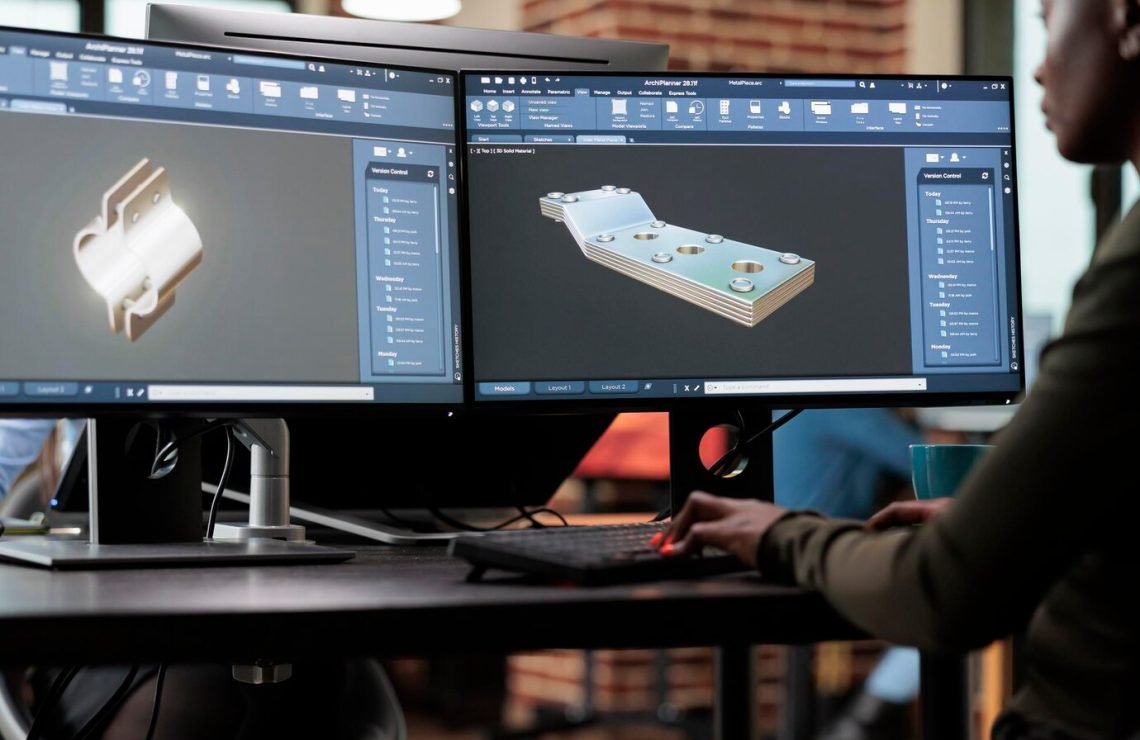Understanding the similarities and differences between CAD, CAE, and CAM

The incorporation of cutting-edge software tools has completely changed how things are designed, evaluated, and manufactured in today’s engineering and manufacturing industry. These tools include computer-aided design (CAD), computer-aided engineering (CAE), and computer-aided manufacturing (CAM), which are crucial to the product development process. Despite the unique roles that each of these software categories plays, they are frequently combined to create a workflow that is smooth from the initial concept to the finished result. Anyone working in engineering, design, or manufacturing has to be aware of the distinctions and overlaps between CAD, CAE, and CAM.
We’ll look at these tools’ individual qualities, complementary qualities, and joint contributions to creative and effective product development in this blog.
Before understanding the key differences and similarities let us understand CAD, CAM, and CAE:
What are CAD, CAM, and CAE?
(CAD) Computer-Aided Design
A basic tool in engineering and design, computer-aided design (CAD) generates accurate 2D and 3D models of goods, structures, and parts. With the use of CAD software, engineers and designers can improve concepts, see them through to completion, and create intricate drawings that act as a manufacturing plan. Modifications and iterations are possible thanks to CAD’s versatility, which facilitates testing various designs and optimizes for manufacturability, usefulness, and aesthetics. CAD is the digital framework that makes ideas come to life, whether you’re creating a small part or a big assembly. It lays the groundwork for further analysis and production processes.
What is CAE?
Computer-Aided Engineering, or CAE
With computer-aided engineering (CAE), digital designs made with computer-aided design (CAD) are put through rigorous analysis and simulation. With the use of CAE tools, one may forecast a product’s performance in a variety of scenarios, including heat, stress, and fluid flow. Before creating actual prototypes, this enables engineers to find potential flaws, maximize the use of materials, and guarantee that the product satisfies performance and safety requirements. Because CAE finds design faults early in the process, it helps save development time and costs while producing more dependable and efficient products. Through integration with CAD models, CAE offers a more profound comprehension of a product’s behavior, guaranteeing its resilience to real-world circumstances.
What is Computer-aided manufacturing, or CAM?
CAM, or computer-aided manufacturing, creates manufacturing equipment instructions from computer-aided models (CAD) to close the gap between design and production. The computer design is converted into precise machining routes, tool movements, and other procedures needed to make the product using CAM software. Manufacturing is streamlined, errors are decreased, and production efficiency is raised by this automation. For precision-driven industries like electronics, automotive, and aerospace where highly accurate production of complex components is required, CAM is indispensable. Manufacturers can guarantee that the design purpose is precisely realized in the finished product and facilitate a smooth and effective transition from digital model to physical object by integrating CAD and CAM.
Software tools called CAD (Computer-Aided Design), CAE (Computer-Aided Engineering), and CAM (Computer-Aided Manufacturing) are utilized in product design, analysis, and manufacture. Despite frequently being used in tandem, each has a specific function in a product development pipeline. Here are the similarities and dissimilarities.
Similarities:
Product Development Process Integration: The product development cycle frequently incorporates all three forms of software. CAE is used for analysis and simulation, CAM is used for production, and CAD is used for design.
These tools frequently cooperate, with CAD data being used for analysis in CAE and subsequently transmitted to CAM for manufacture.
Computerized Modelling: Digital models are used in all three. CAD was modeled and used for simulation by CAE, and CAM gave production instructions to produce digital designs.
Efficiency and Automation: Every kind of software automates a portion of the production, analysis, or design process, which speeds up product development and increases productivity while lowering errors.
Cooperation: To facilitate information sharing, these technologies frequently support file formats like STEP or IGES for CAD to CAM or particular formats that transfer simulation and design data from CAD to CAE.
Differences:
Crucial Role: Computer-aided design, or CAD, focuses on producing intricate 2D or 3D models of goods. Engineers and designers mostly use it to conceptualize and create components and assemblies.
Computer-Aided Engineering, or CAE, focuses on modeling and analyzing CAD-created designs. Stress analysis, heat analysis, and fluid dynamics are just a few situations under which CAE is used to evaluate and optimize designs.
Computer-aided production, or CAM, focuses on the production process, converting computer-aided design (CAD) files into instructions for manufacturing. CAM is used to operate CNC machines and other machinery that produces parts.
Equipment and Features
CAD: Consists of design documentation, 3D modeling, and drafting tools. Assembly design, surface modeling, and parametric modeling are examples of features.
Multi-physics simulation, computational fluid dynamics (CFD), and finite element analysis (FEA) are all included in CAE. Engineers can use it to optimize designs and replicate physical behaviors.
CAM: This group of tools includes machining simulation, CNC programming, and tool path generation. It focuses on the manufacturing process of a design, detailing tool movements and machine operations.
Final Audience
CAD: Generally used for design creation and refinement by architects, engineers, and designers.
CAE: A program used by analysts and engineers who are experts at predicting how things would perform in real-world scenarios.
Manufacturing engineers, machinists, and CNC programmers who concentrate on the actual manufacture of parts use CAM.
Final Product
CAD generates intricate models, design drawings, and documentation that specify a product’s features and geometry.
Simulations, analytical results, and optimization data are output by CAE, which verifies the performance of the design.
CAM: Provides machine instructions, such as G-code, to CNC machines and other manufacturing equipment so they can produce parts.
In conclusion, although having distinct functions within the product development lifecycle, CAD, CAE, and CAM software are linked and frequently utilized to guarantee the successful design, analysis, and manufacturing of items. The digital base is provided by CAD, the design is made possible through manufacturing by CAM, and the performance of the design is guaranteed by CAE. For more details, you can consult the Zimo.One professional, Zimo.One is an established engineering services company. We provide you with the best solution let it be CAD Design software or any other. You can rely on the expert and dependable team of Zimo professionals.
